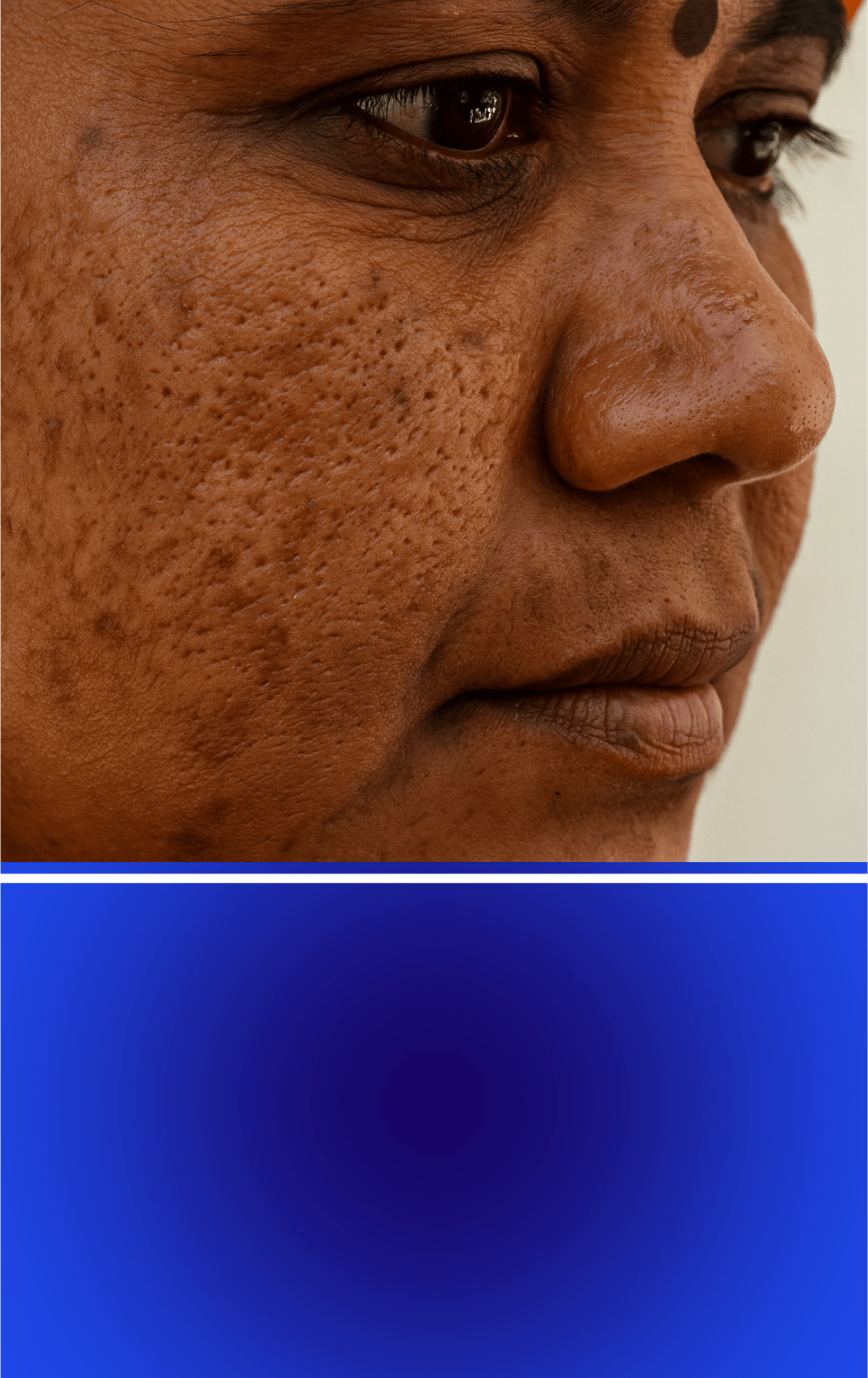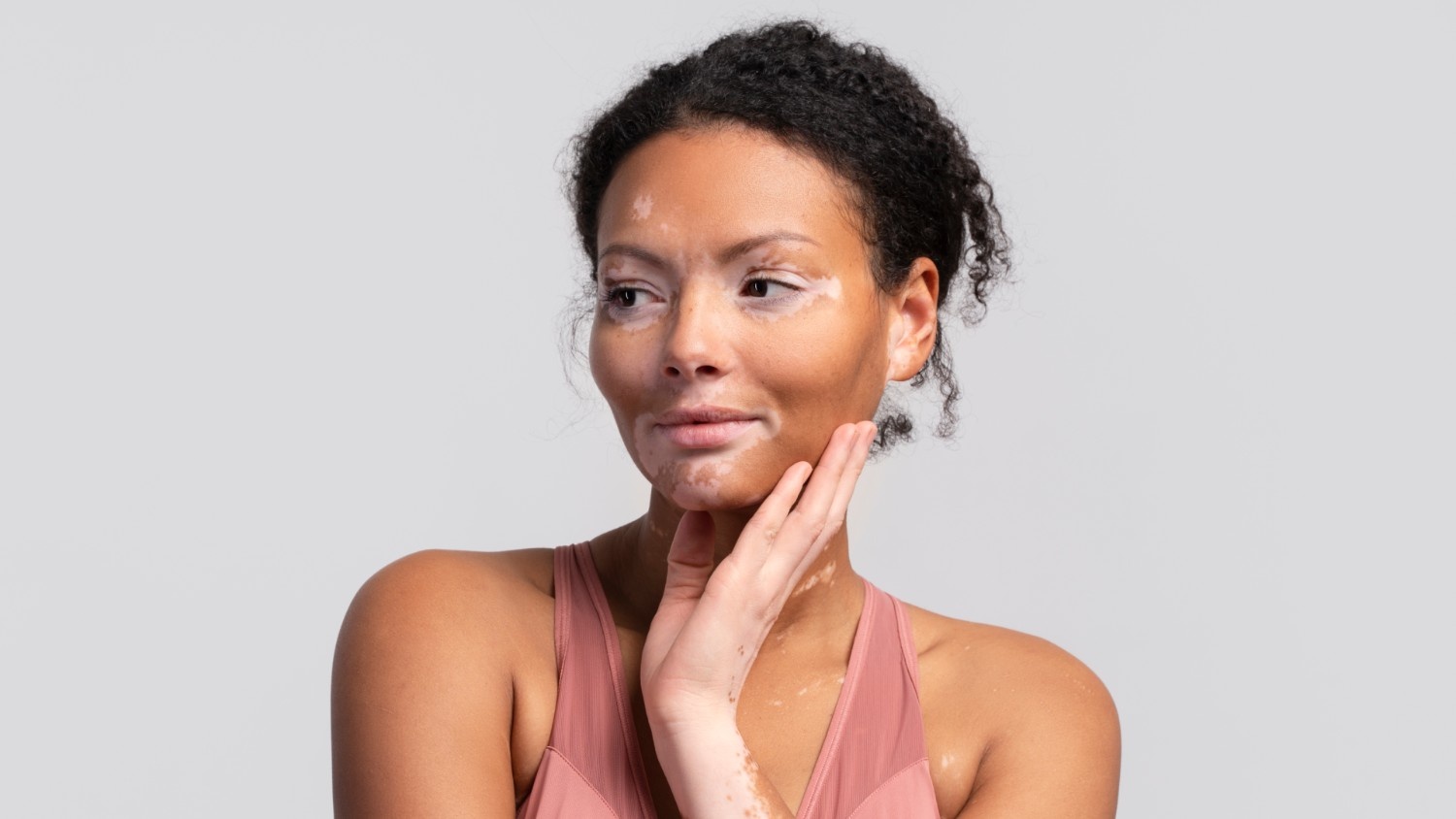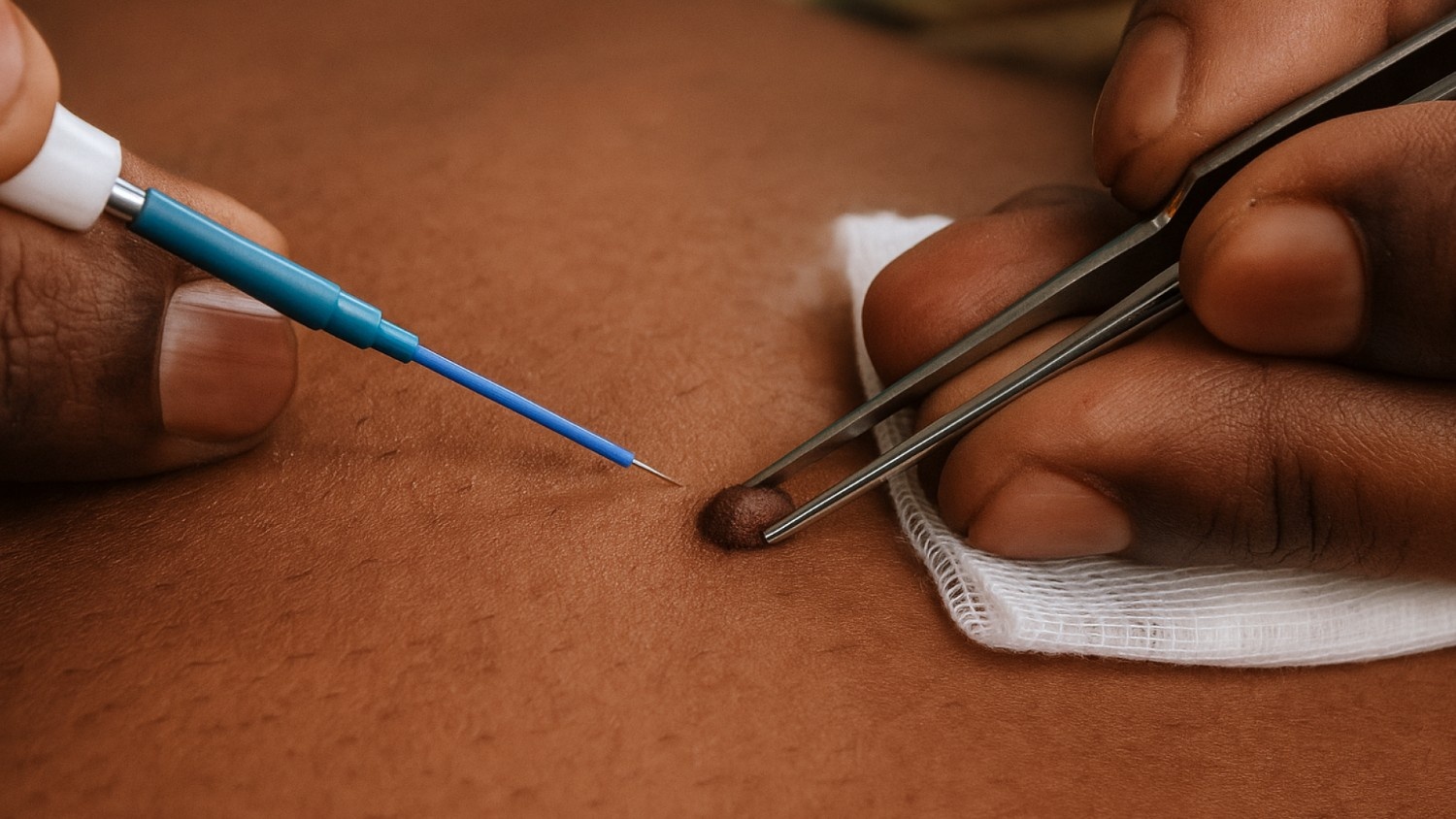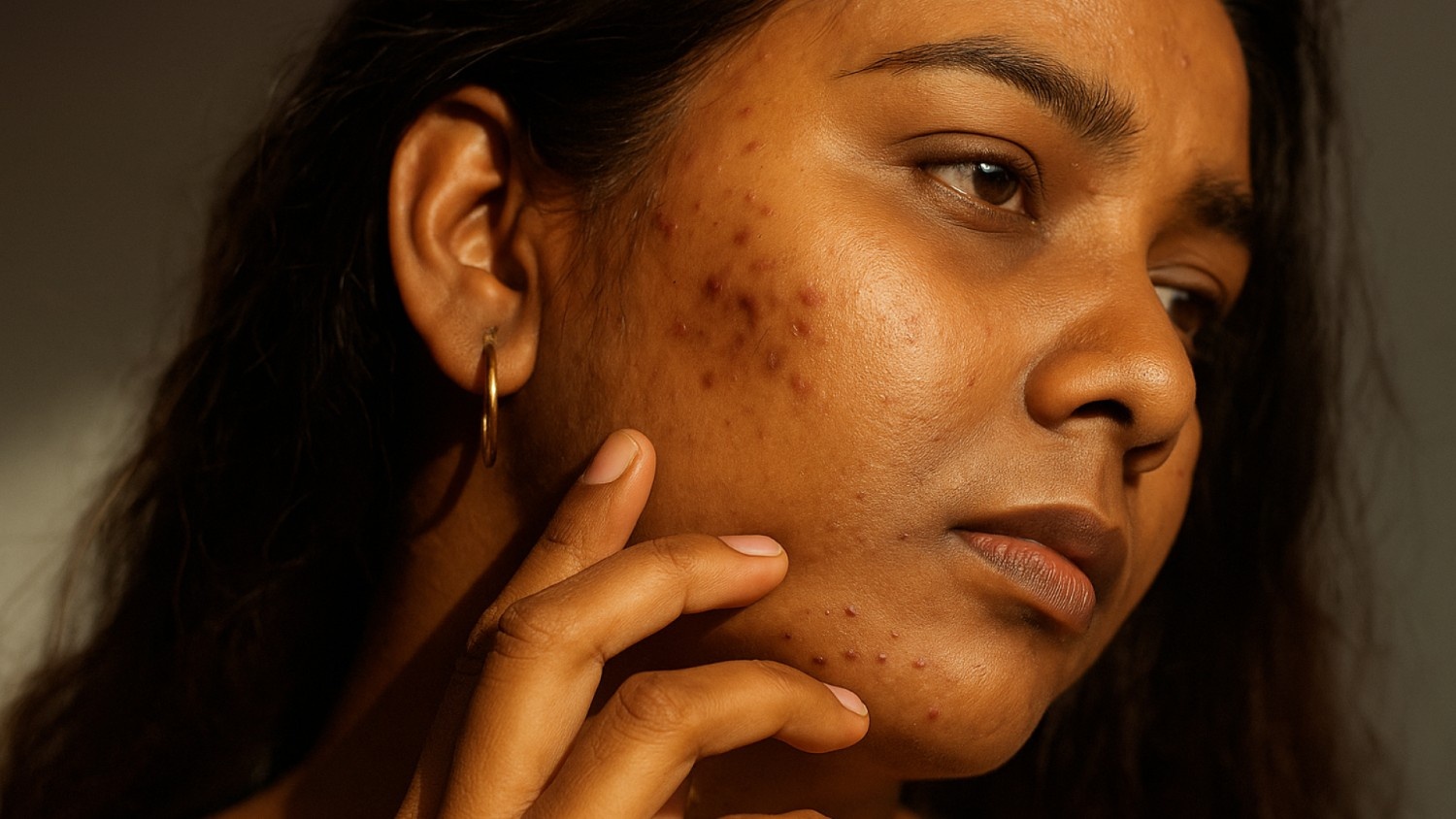Acne vulgaris remains one of the most common skin conditions worldwide, affecting millions across all age groups, though it’s most prevalent in teenagers and young adults. In India, lifestyle changes, increasing pollution, and dietary habits have contributed to a rising incidence of persistent acne cases.
A 2023 review in the Journal of Clinical and Aesthetic Dermatology found that targeted, personalised acne management achieved significantly better long-term clearance rates compared to generalised treatments. This highlights the importance of accurate diagnosis and tailored therapy to manage breakouts effectively.
Acne can affect self-confidence and quality of life, but with the right approach, it is manageable. This guide covers the different types of acne vulgaris, the main causes, and the latest treatment options, along with practical tips for maintaining clear skin.
Overview
- Definition: Acne vulgaris is a chronic inflammatory condition of the hair follicles and sebaceous glands.
- Common Age Group: Teenagers and young adults, though it can persist into adulthood.
- Main Causes: Excess sebum, clogged pores, bacterial overgrowth, and inflammation.
- Types: Whiteheads, blackheads, papules, pustules, nodules, and cysts.
- Treatments: Topical therapies, oral medications, advanced dermatological procedures.
- Prevention: Skincare routines, diet adjustments, and stress management.
What is Acne Vulgaris?

Acne develops when hair follicles become clogged with oil and dead skin. That trapped material allows bacteria to multiply and triggers inflammation. Several biological processes act together:
- Overactive sebaceous glands increase oil production.
- Abnormal desquamation causes dead skin cells to stick together and plug follicles.
- Cutibacterium acnes grows in the plugged follicle and releases factors that promote inflammation and sometimes biofilms. Recent research highlights the complexity of microbial factors and virulence traits that influence severity.
This combination explains why treatment often needs more than cleansing or a single product. Treating acne effectively means interrupting these processes in a targeted way. Understanding the biology helps you interpret the various lesion types and select the appropriate treatment.
Types of Acne Vulgaris

Not all acne looks or behaves the same, and those differences can make or break a treatment plan. Identifying the specific type of lesion is the first step toward choosing therapies that actually work for your skin.
1. Non-inflammatory
- Blackheads (open comedones): Pores open to the surface and appear dark because of oxidation.
- Whiteheads (closed comedones): Small flesh coloured bumps trapped under the skin.
2. Inflammatory
- Papules: Small, red, tender bumps.
- Pustules: Papules with pus.
- Nodules: Large, firm, painful lumps deep in the dermis.
- Cysts: Deep pus-filled lesions that have the highest risk of scarring.
Practical note: Comedonal acne often responds to topical retinoids or chemical exfoliants. Inflammatory acne may need antibacterial agents or systemic therapy when moderate to severe.
Once the lesion type is clear, your dermatologist will grade the severity and recommend targeted tests if needed.
Diagnosis and Severity Grading
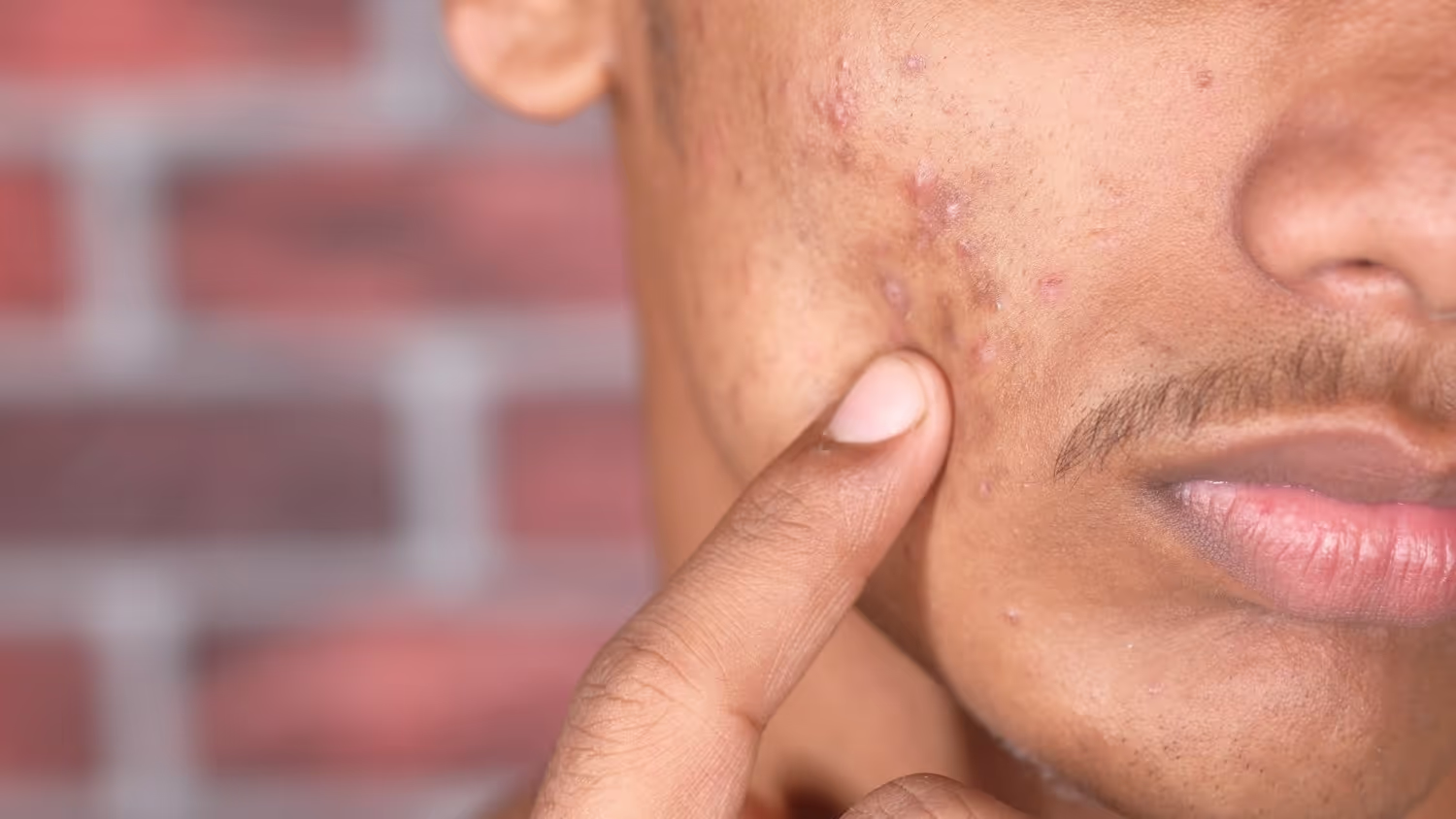
Accurate diagnosis is where treatment plans stop being guesswork and start being targeted. Understanding how dermatologists assess acne helps explain why two patients with similar breakouts might follow very different paths.
Common grading frameworks that guide treatment choices:
- Mild: Predominantly comedones with few inflammatory lesions.
- Moderate: Multiple inflammatory lesions with a mix of comedones and pustules.
- Severe: Nodulocystic acne or extensive inflammatory lesions that risk scarring or cause functional or psychological distress.
Investigations are not always required. They are indicated when: adult-onset acne suggests hormonal causes, severe acne resists therapy, or an atypical presentation prompts a search for underlying disease.
Common investigations your dermatologist may order:
- Hormonal panel when clinical signs of hyperandrogenism are present (e.g., irregular cycles, hirsutism).
- Basic blood tests are performed if systemic therapy like isotretinoin is considered.
- Microbiological testing in unusual infections or treatment failures.
With a clear diagnosis and grading, treatment choices become more predictable. Next, we look at evidence-based treatments and how they are used in practice.
Evidence-based Treatment Options
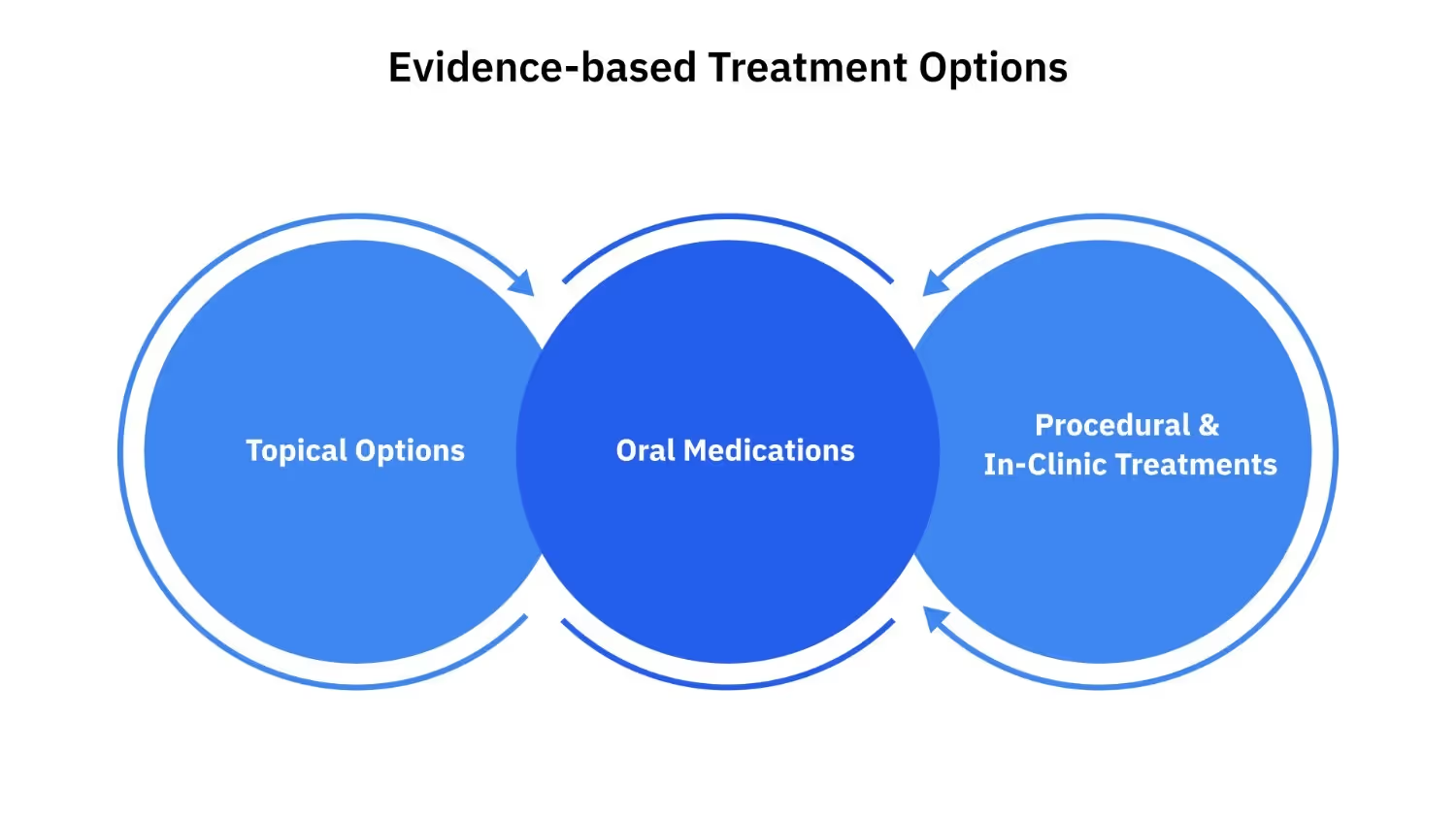
Once the type and severity of acne are clear, treatment becomes a more precise science. The most effective plans often combine multiple approaches, targeting different parts of the acne cycle at once. In recent years, dermatology has shifted towards customised combinations rather than relying on a single “miracle” product.
1. Topical options (first line for mild acne)
- Topical retinoids: Promote cell turnover and prevent comedone formation.
- Benzoyl peroxide: Reduces surface bacteria and inflammation. Often used together with retinoids.
- Topical antibiotics: Used only in combination with benzoyl peroxide to avoid resistance.
2. Oral medications (for moderate to severe acne)
- Oral antibiotics: Short courses are recommended, typically not beyond 12 weeks unless under close specialist review, and always combined with topical agents to limit resistance.
- Hormonal therapy: Combined oral contraceptives or anti-androgen therapy, such as spironolactone, when hormonal acne is suspected.
- Isotretinoin: The most effective option for severe nodulocystic or treatment-resistant acne. It requires strict monitoring because of known side effects and teratogenic risk.
3. Procedural and in-clinic treatments (adjuncts for scarring, persistent lesions, or fast improvement)
- Chemical peels: Salicylic and glycolic peels help comedonal and mild inflammatory acne and improve texture.
- Light and laser therapies: Target bacteria, oil production and inflammation; useful as adjuncts in selected cases.
- Intralesional steroid injection: Rapid reduction of painful nodules or cysts.
- Microneedling and subcision: For established acne scarring under dermatologist guidance.
Choosing the right mix depends on acne type, severity, patient preference, and safety considerations. Next, we cover what to expect during common treatments and the typical timeline.
Treatment timeline and realistic expectations
Starting treatment can feel like a race against the mirror, but acne care is a gradual process. Many patients lose hope too soon simply because they don’t know what kind of timeline to expect. Understanding the realistic pace of improvement can help you stick with a plan long enough to see results.
Typical timelines:
- Topical treatments: Allow 8 to 12 weeks to see initial improvement, with continued gains up to 6 months.
- Oral antibiotics: Improvement often starts within 4 to 8 weeks, but they are usually prescribed for limited courses.
- Hormonal therapy: Expect 2 to 3 months for noticeable benefits, sometimes longer.
- Isotretinoin: Complete courses run 4 to 6 months or longer; many patients achieve long term remission but monitoring is essential.
- Procedures: Chemical peels or light therapy require multiple sessions spaced weeks apart; results build cumulatively.
Practical point: Temporary flares or purging can occur in the first few weeks after starting retinoids or certain therapies. These are usually transient and predictable when discussed ahead of time.
If you’re unsure about what treatment to choose, book a consultation with Dr. Janani Sree C M at Velantis Dermatology, Chennai, for a personalised acne assessment and treatment plan.
Knowing the timeline helps with planning and follow-up. Next, here is a practical, step-by-step look at common in-clinic procedures.
Step-by-Step Guide to Common Procedures
For some, the most visible changes come from in-clinic treatments performed by a qualified dermatologist. These procedures can fast-track results, refine skin texture, and reduce the risk of future breakouts or scarring. But knowing exactly what will happen in the chair can ease anxiety and help you prepare.
A. Chemical peels (superficial to medium)
- Consultation and skin assessment by the dermatologist.
- Cleansing and, if necessary, degreasing of the skin.
- Application of the chosen peel solution for a controlled time.
- Neutralisation and calming phase.
- Post-procedure instructions for sun protection and gentle care.
B. Light and laser therapies (e.g., IPL, fractional lasers)
- Pre-treatment assessment and photography.
- Eye protection and topical cooling if needed.
- Laser passes are delivered by trained staff under dermatologist's supervision.
- Immediate redness is common, with variable downtime depending on the device and settings.
C. Intralesional steroid injection for nodules
- Local technique performed with a fine needle to inject a small steroid dose directly into a single nodule.
- Rapid reduction in pain and size over 24 to 72 hours.
D. Microneedling for scars
- Performed under a topical anaesthetic.
- Needling induces controlled injury to stimulate collagen remodelling.
- Often combined with PRP or topical serums, depending on the indication.
All in-clinic procedures at Velantis are performed under dermatologist oversight with standards for informed consent and recovery planning.
Procedures can speed visible improvement and reduce scarring when combined with medical therapy. That said, every treatment carries potential side effects that you should know about.
Side Effects, Risks, and Safety Monitoring
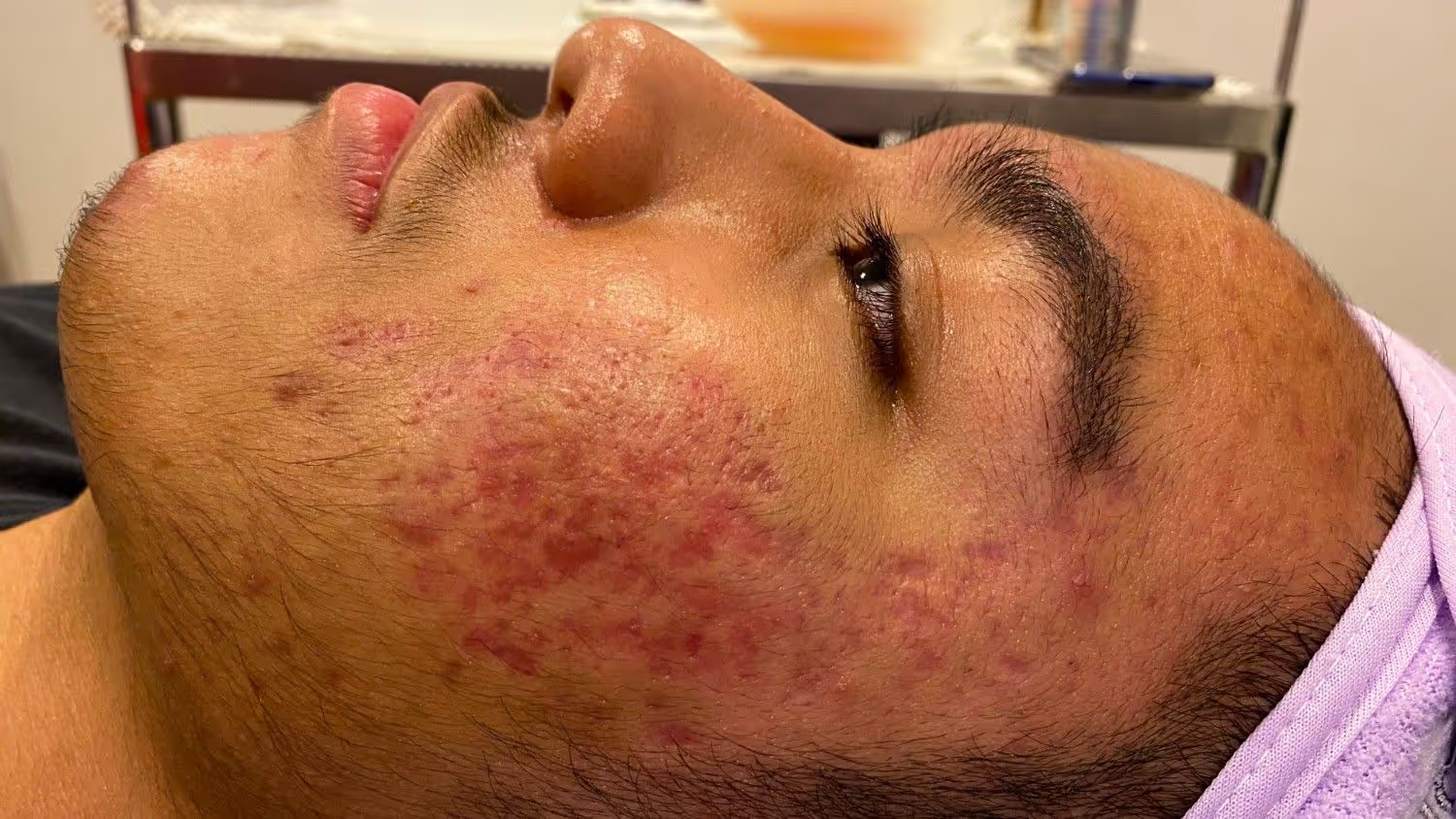
Even the safest acne treatments carry some degree of risk, and understanding these helps you make balanced choices. From mild irritation to rare but serious complications, every therapy has a profile that should be weighed against its benefits.
Common and expected side effects:
- Topicals: Irritation, dryness, peeling, and sun sensitivity.
- Oral antibiotics: Gastrointestinal upset, photosensitivity, and risk of resistance. Limit duration to reduce resistance.
- Isotretinoin: Dry skin, cheilitis, elevated liver enzymes, blood lipid changes, mood effects in rare cases, and a high teratogenic risk requiring strict contraceptive measures and monitoring. Regular blood tests are mandatory.
- Lasers and peels: Temporary redness, peeling, pigmentary changes, and rarely scarring or infection when protocols are not followed.
Monitoring protocols your dermatologist will follow:
- Blood tests before and during isotretinoin therapy, including liver function tests and lipid profile. Pregnancy testing and documented contraception for those who can become pregnant.
- Review of antibiotic duration and combined topical therapy to reduce resistance.
Safety requires planning. Before treatment begins, there are practical steps to prepare and aftercare rules to follow.
Before and After Care: Practical Guidance
The work of acne treatment doesn’t stop once you leave the clinic. Preparation and aftercare play a huge role in how well your skin responds to therapy. Following your dermatologist’s instructions closely can mean the difference between great results and unnecessary setbacks.
Before your treatment
- Share full medication history, pregnancy plans, and any chronic conditions with your dermatologist.
- Avoid starting new irritant products one to two weeks before procedures.
- For isotretinoin, contraception counselling and baseline blood tests are required.
After your treatment
- Strict sun protection after peels or lasers.
- Use gentle cleansers and moisturisers; avoid new active ingredients for a few days as advised.
- For intralesional steroid injections, expect improvement over days and report worsening or infection signs promptly.
Who should consider which treatments and who should avoid certain options?
When Should You Avoid Specific Treatments?
Not every skin or hair treatment is right for everyone. Your skin type, health conditions, and lifestyle can influence both the safety and results of the procedure. Here’s a quick comparison to help you understand who may benefit — and who should be cautious.
Your dermatologist will review safety, comorbidities, and life plans before recommending systemic options.
Real patients also want to know whether acne can be cured and what long-term care looks like.
Long-term Maintenance and Realistic Outcomes

Getting visible results from any skin or hair treatment is only the first step, keeping those results over time requires a consistent approach. The right maintenance routine, paired with realistic expectations, ensures that your investment in treatment continues to deliver benefits well beyond the initial sessions.
Key factors for long-term maintenance:
- Follow-up sessions: Many treatments require periodic touch-ups to sustain results. Skipping these can reduce the overall effectiveness.
- Skincare and haircare at home: Using dermatologist-recommended products helps protect your results and prevents the recurrence of issues.
- Healthy lifestyle: Balanced nutrition, hydration, and adequate sun protection can significantly prolong treatment effects.
Setting realistic expectations:
- Treatments improve skin and hair health, but results vary depending on individual conditions, age, and adherence to aftercare.
- Some concerns may require ongoing management rather than a one-time fix.
- Gradual improvement is common, and sudden, dramatic changes should not be expected for all procedures.
Conclusion
Acne vulgaris may be common, but that doesn’t mean you have to live with it or accept the marks it leaves behind. With timely, targeted care and a plan tailored to your skin’s needs, clear and healthy skin is within reach. The earlier you address breakouts, the lower the risk of scarring and long-term frustration.
Your journey to clear skin starts today. Book your consultation with Velantis Dermatology and let Dr. Janani Sree C M guide you with proven, science-backed acne treatments.
FAQs
Q1. How long before I see improvement?
A1. Most topical regimens show visible change in 8 to 12 weeks. Oral antibiotics often show benefit within 4 to 8 weeks. Isotretinoin courses span months and aim for long-term remission.
Q2. Are antibiotics still safe for acne?
A2. Yes, when used appropriately and for a limited duration. Overuse risks resistance. Guidelines recommend combining antibiotics with topical agents and using them for the shortest effective period.
Q3. Is isotretinoin safe?
A3. Isotretinoin is highly effective for severe acne but requires careful monitoring because of possible liver, lipid, and teratogenic risks. A dermatologist will discuss contraception, baseline tests, and regular follow-up.
Q4. Will acne scar permanently?
A4. Not always. Early treatment of inflammatory acne reduces scarring risk. For established scars, treatments such as microneedling, lasers, and chemical peels can substantially improve texture, often with multiple sessions.
Q5. Can diet alone cure acne?
A5. Diet may influence acne for some people, particularly high glycaemic load diets or dairy triggers. It is rarely a sole cause or cure. Discuss targeted dietary changes with your dermatologist as part of a comprehensive plan.
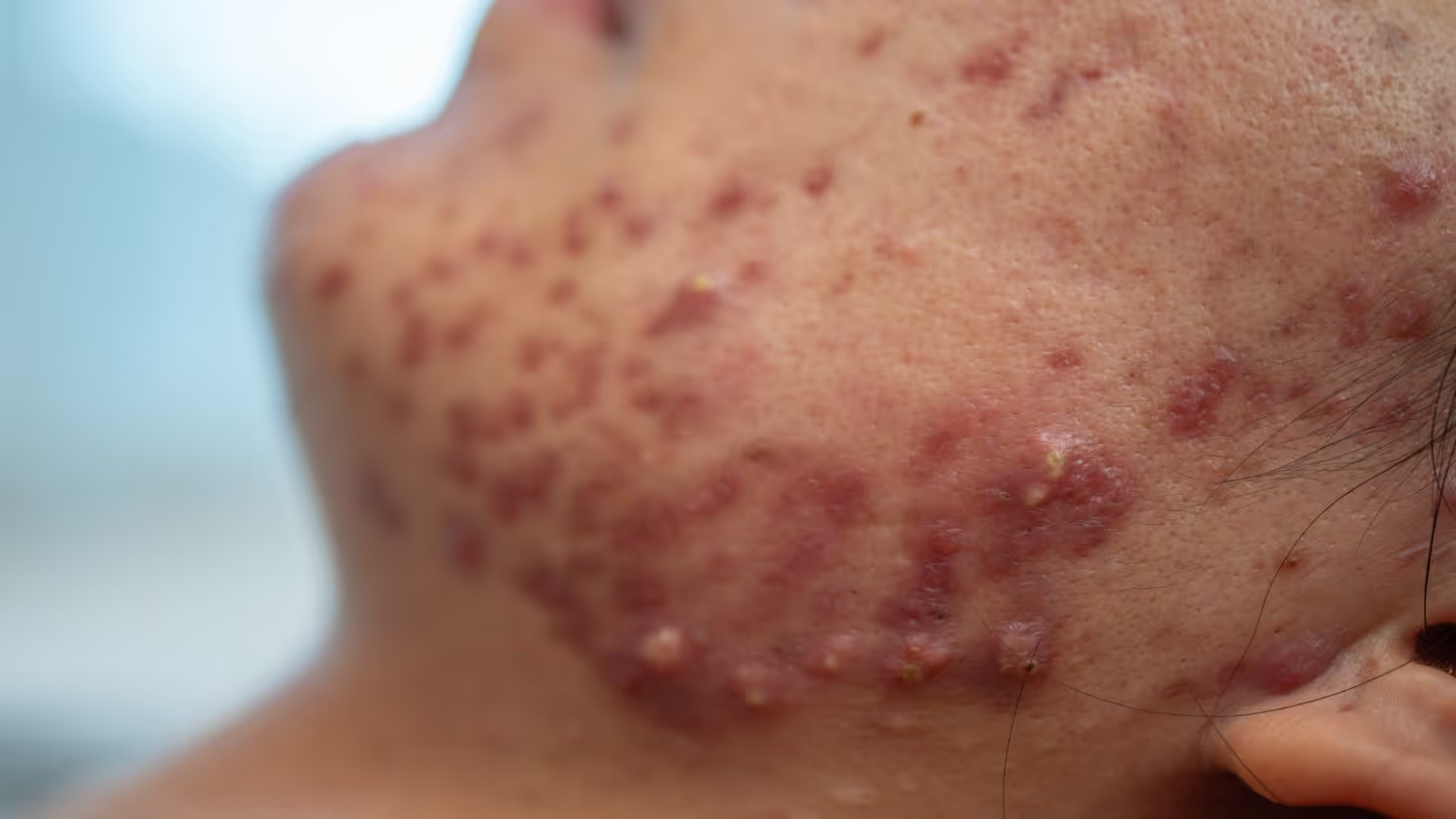

.png)
